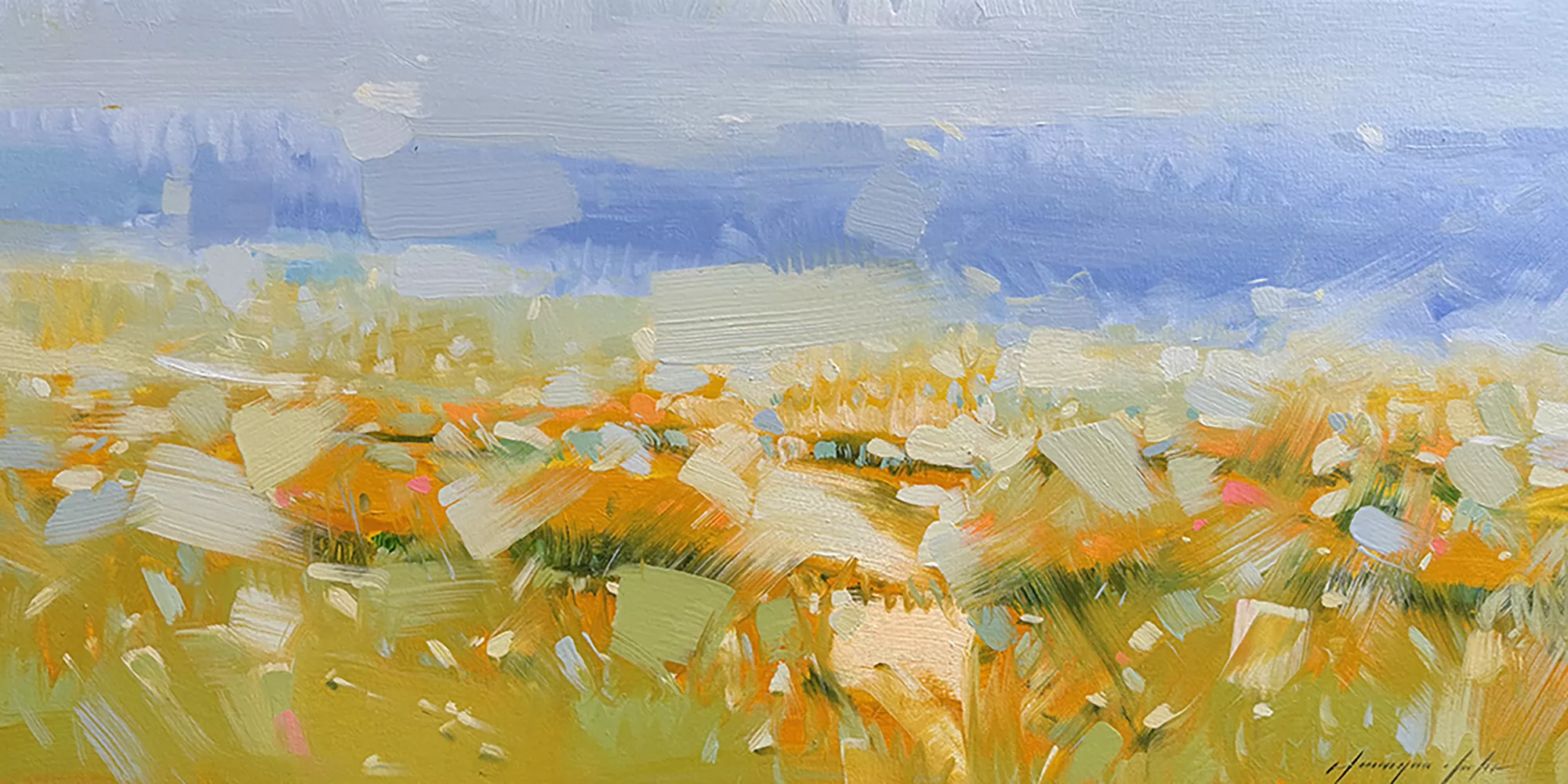What is Impressionism? Chances are, you’ve grown accustomed to seeing impressionistic paintings dotted around homes in contemporary life, whether you know much about the subject or not. We’ve become very fond of this particular art style, defined by large, bold brush strokes and en plein air paintings of everyday life. But although impressionistic paintings may seem commonplace nowadays, this hasn’t always been the case. In fact, you might be surprised to learn that the rise of Impressionism in the late 19th century was seen as a rather radical act, fought against by the artistic elite of the time.
Originating in Paris in the late 1800s, the artists of the Impressionist movement rejected the grand themes of myth, religion and history completely. Instead, they turned their attention to everyday life, often captured in person, straight onto the canvas. The aim of Impressionism was to capture a feeling or mood instead of capturing realism or an accurate depiction. At the heart of their practice was lighting — and the way light could capture a moment in time, before changing the subject completely mere moments later.
A very brief history of Impressionism
Our journey begins in France during the 1860s, a time when the art world was dominated by the rigidity of academic traditions. A group of rebellious artists, including the likes of Claude Monet, Pierre-Auguste Renoir, and Camille Pissarro, sought to break free from these constraints. Their works, initially met with scepticism, gradually gained recognition and marked the birth of Impressionism.
These painters began to embark on a new style of painting known as en plein air — the practice of painting outdoors, capturing brief and transient moments of nature and lighting. This was made significantly easier by the invention of paint in a tube by American John Rand in 1841, an invention that revolutionised the painting practice and allowed artists to move from indoor studios to the great outdoors.
Groups of plein air painters began to meet up in Parisian cafes to discuss their ideas. Realist painter Eduardo Manet was among them, and many of his radical ideas regarding modernity and spontaneity of brushstrokes would later become a staple of the Impressionist movement.
But they weren’t always called Impressionists — indeed, they exhibited initially under the name “The Cooperative and Anonymous Association of Painters, Sculptors, and Engravers”. The name Impressionism came as a tongue-in-cheek nod to one of their press critics, who used the name to describe the group, insultingly referring to one of Monet’s paintings, "Impression, Sunrise". Since Monet was a key player in the development of the style, the group gladly adopted the name and ran with it.
Key characteristics of Impressionism
Light and colour: The Impressionists said goodbye to dull colours and hello to all things vibrant. They were all about the drama of light and colour, ditching the studio for the great outdoors, and letting the sun be their spotlight while they painted scenes with bold and exciting hues.
Brushstrokes: Forget about perfectly manicured brushwork; Impressionists were all about letting their brushstrokes take on a new level of freedom onto the canvas — creating something refreshingly visible, expressive, and full of zest.
Everyday scenes: Impressionists were rebels with a cause — to ditch the grandiose and celebrate the everyday. From bustling urban life to leisurely picnics, they turned the ordinary into the extraordinary, one brushstroke at a time.
Atmosphere and mood: Realism was not at all a focus for these artists. Impressionists wanted to capture the mood, to depict how they felt rather than what they saw. Detailed realism took a backseat as they turned their artistic focus to atmosphere and feeling.
Recognise these names? Some key Impressionist painters
The Impressionist movement boasts a stellar cast of visionaries, each contributing a unique flair to the canvas. Claude Monet, the "father of Impressionism," mesmerised audiences with his waterlilies and serene landscapes. Edgar Degas brought the elegance of ballet to life, while Auguste Renoir infused warmth and humanity into his portraits. Other notable artists include Camille Pissarro, Berthe Morisot, and Mary Cassatt, all leaving an indelible mark on the art world.
Legacy and impact of Impressionism
Fast forward to the present, and the influence of Impressionism continues to ripple through the fabric of art and culture. The movement paved the way for future avant-garde styles, inspiring generations of artists to experiment with new forms of expression. Its emphasis on capturing the beauty of ordinary moments echoes in contemporary art, photography, and even cinematography, reminding us to appreciate the transient nature of life.
You might even say that Impressionists walked so future art movements could run, including Symbolism, Fauvism, and Cubism. Soon to follow was the Post-Impressionist movement, with artists such as Paul Gauguin, Georges Seurat, and Paul Cézanne taking centre-stage. These artists would go on to push the boundaries of painting even further, experimenting with colour to greater levels, flattening forms, and adding elements of abstraction.
But the legacy of Impressionism came down to more than just stylistic elements. It was their independence from state-sponsored exhibitions and ability to step outside the establishment that really inspired generations of artists to come. Similarly independent exhibition groups began to pop up throughout Europe during the late 19th and early 20th centuries, including Die Brucke in Germany and the Vienna Secession in Austria.
Impressionism reimagined
Contemporary artists, including many of our favourites here at Artfinder, continue to be drawn to the allure of the Impressionist style, seamlessly blending traditional techniques like en plein air with bold forays into Post-Impressionism and abstract reinterpretations.
If you're passionate about this captivating artistic genre, you're in luck! We’ve got a whole section dedicated to an extensive array of Impressionist masterpieces for you to explore. Immerse yourself in the world of Impressionism and discover which of these reimagined Impressionist styles is your favourite.
Hero image credit: Vahe Yeremyan


